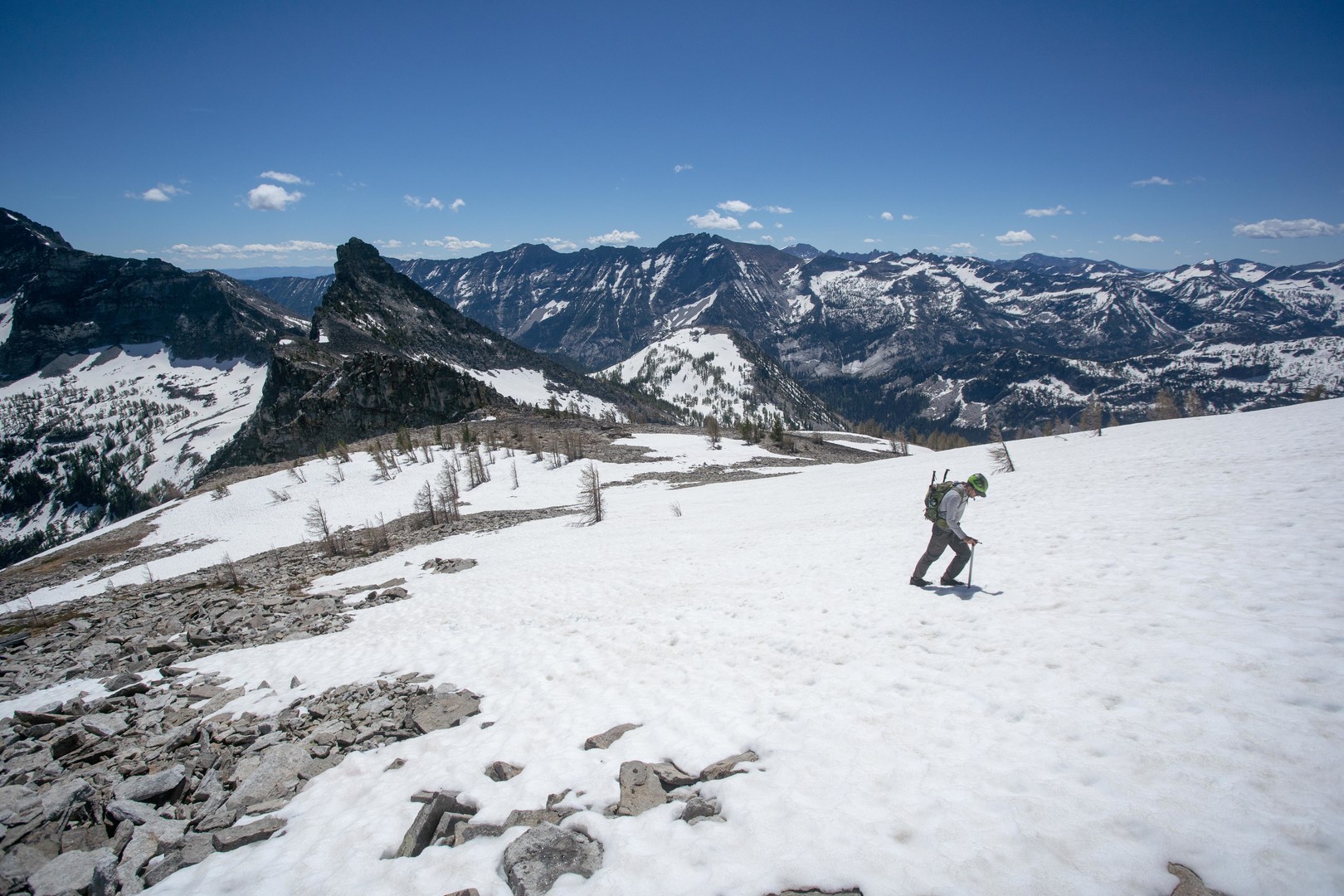You are here
There are many El Capitans in the United States, none more famous than the one in Yosemite. But while Montana's El Capitan doesn't get anywhere near the same attention, it's absolutely worth your time. It's the second tallest mountain in the Bitterroot Range (just behind Trapper Peak) but is far more remote, more complex, and much more interesting. El Capitan's imposing face can be viewed from many of the peaks in the Bitterroot, and even from the valley floor near Hamilton, and the views from the top are spectacular.
A disclaimer on this description and track - this off-trail line was traveled on a single day with certain conditions. The route described is a reasonable way to move through this terrain, and the description below mentions some of the hazards found during the trip. However, conditions may be significantly different when you visit this area. The advice in this trip report is not meant to be followed perfectly - you will need to adapt the route for the conditions you find and for your party’s abilities.
The Basics
-
Seasonality/Snow: This route will generally be dry from mid-July to September. It’s a lot of fun earlier season, but expect steep snow on the climb and descent.
-
Route Add-ons/Alternatives:
- For a much more burly trip, you can consider the High Five Traverse, which links El Capitan, Lonesome Bachelor and the West, Middle, & East Como Sisters into a fourth-class traverse. Don't take this alternative lightly.
-
Number of Days: This goes in a single day, though there’s gorgeous camping at Little Rock Creek Lake or the upper tarns if you want an overnight.
-
Navigation: Bring a map and/or a GPS, it can get a bit tricky out there.
-
Gear:
-
Good gear for scrambling and moving fast in the mountains.
-
You’ll want an ice axe and traction (crampons) if it’s still early season.
-
Note on LNT
El Capitan doesn't see a ton of visitors and involves a lot of off-trail travel, so make sure you're following LNT principles to make sure this beautiful area stays the way it is.
The Trip
The Approach
You'll begin at the Little Rock Creek Lake Trailhead, high above Lake Como. Almost immediately, the trail drops 500', which will be demoralizing at the end of the trip, but for now provides distant views of the Como Sisters. Continue up the trail, which is poorly maintained and has many blowdowns and water crossings. The trail can be followed with some trouble, but a GPS will help make sure you're heading in the right direction. After four miles, you'll come to Little Rock Creek Lake. Head north across the dam on rocks and logs and find the trail heading up the northern side of the lake. From here you'll get your first big views of El Capitan, looking imposing in the distance.
As you near the top of the lake, the trail will get more and more faint. Follow it as you can, trending upwards and west. You'll find scattered cairns to show that you're on the right path. Continue up to the tarn-filled basin at 7,400'. As you climb, you'll get eyes on the three couloirs east of the summit. The most common approach is via the climber's left-most couloir. Once you're in the basin, head toward the couloirs.
The Climb
In the spring and early summer, the couloirs will be filled with snow. The leftmost couloir, when filled with snow, gets up to 50 degrees at the top, so don't get into it unless you're confident you can descend it. If it's not snowy, you'll have an easier time, as the couloir is filled with talus. Head up the talus, climbing up around 800' before reaching the top of the ridgeline. From there, head west toward the obvious summit. It's relatively low-angle talus that gets slightly steeper as you ascend. Once you reach the summit ridge, you'll see several towers. While the two southernmost look about the same height, the second from the south has two USGS summit markers. Head toward it.
To reach the top, it's a roughly 30' scramble up fourth-class terrain with exposure. But the views from the top are definitely worth it - if it's a clear day you can see over 120 miles, all the way to the Swan Range, the Mission Range, the Lemhi Range, the Pintlers, and the entire Bitterroot.
Once you've taken in the view, head down - it's a long way out, but on your way make sure to take the time to swim in one of the several lakes!
Logistics + Planning
Current Weather: Powered by Dark Sky






























Comments
Sign In and share them.